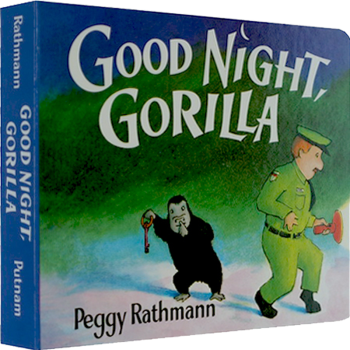![The Adventures of Huckleberry Finn哈剋貝利·費恩曆險記 英文原版 [平裝]](https://pic.windowsfront.com/19017205/rBEQWVEPUDMIAAAAAATNX2qpGDgAAAjbwC8FoAABM13461.jpg)

具體描述
編輯推薦
A captivating version of Mark Twain's classic yarn about an orphan growing up on the Mississippi. The narrator's voice resembles Twain's; he uses Twain's language. The reader for Tom does an exceptional job. A few of the minor characters sound forced, but don't ruin the performance. For all ages.Hearn, who edited The Wizard of Oz for Norton's Annotated series, has taken on that formative fiction of American culture, Huckleberry Finn a seemingly transparent work that, as presented in Hearn's exhaustive research, harbors linguistic complexities worthy of an Eliot or a Joyce. In his long introduction, Hearn chronicles Huck's publishing history, from its on-again, off-again composition, to Twain's stormy relationship with his publishers, to the book's embattled trip to the printer (trailing censorious editors in its wake) and its instant success on the market. Hearn offers a thorough cataloguing of the book's critical reception and many controversies, an ample pinch of biography, a lengthy analysis of dialect and a fairly sketchy historical background. The notes themselves (presented alongside the text) are eclectic, sometimes charmingly so: we learn what a huckleberry is, and a sugar-hogshead, and how corn pone is made. Huck's vast repertory of Southern superstitions is carefully glossed, and Hearn wisely includes quotes about the book from Twain (who could scarcely open his mouth without saying something funny) whenever possible. The notes go overboard in their extensive translation of the book's idiomatic speech (readers probably don't need "powwow" defined and can figure out for themselves that "hoss" means horse). On the whole, Hearn supplies interesting information with a light touch possibly too light in the last third of the book, which seems more thinly annotated than the beginning. Restored passages not seen in the original appear in the appendices. Though a stronger anchor in cultural history could have made this volume better, this liberally illustrated and beautifully designed book offers many pleasures for the general reader. (Oct.)Forecast: This is the perfect gift book for all of Huck's fans and should sell very well with the aid of a six-city author tour and national media appearances. Also, in January 2002, a Ken Burns series on Twain will air.
內容簡介
The Adventures of Tom Sawyer (1876) is Mark Twain's most popular book, and its hero is a national icon, celebrated as a distinctively American figure both at home and abroad. Tom Sawyer's bold spirit, winsome smile, and inventive solutions to the problems of everyday life in fictional St Petersburg - whether getting his friends to whitewash a fence for him, or escaping the demands of his vigilant Aunt Polly - have won him the hearts of generations.The very success of Mark Twains's first novel has obscured its contradictions and the extent to which the author's response to contemporary cultural developments was a mixed one. Tom Sawyer is not only a deft comedy and a powerful celebration of childhood. It also reflects how Mark Twain was in the process of finding his distinctive voice, a voice with which he could express the conflicts he felt about coming of age in America.
作者簡介
The Modern Library has played a significant role in American cultural life for the better part of a century. The series was founded in 1917 by the publishers Boni and Liveright and eight years later acquired by Bennett Cerf and Donald Klopfer. It provided the foundation for their next publishing venture, Random House. The Modern Library has been a staple of the American book trade, providing readers with affordable hardbound editions of important works of literature and thought. For the Modern Library's seventy-fifth anniversary, Random House redesigned the series, restoring as its emblem the running torch-bearer created by Lucian Bernhard in 1925 and refurbishing jackets, bindings, and type, as well as inaugurating a new program of selecting titles. The Modern Library continues to provide the world's best books, at the best prices.,,內頁插圖
精彩書評
Huckleberry Finn may be the greater book, but Tom Sawyer has always been more widely read. Moreover, it is a book that can be enjoyed equally by both children and adults. Twain, who called it a "hymn" to boyhood, would be thrilled that in narrator Patrick Fraley his hymn has found its most passionate voice. Many good unabridged readings of Tom Sawyer have already been recorded, but most are simply that: readings. Fraley's performance is something more; in attempting to bring each character to life, his enthusiasm for the material is so palpable that the mere sound of his voice commands attention. A can't-miss addition to all libraries, including those that have other Tom Sawyer programs.——Kent Rasmussen, Thousand Oaks, CA
Grade 5 Up-British actor Mike McShane provides a superb portrayal of Mark Twain's classic characters, nailing the Mississippi drawl and cadence. For those who know and love the story or are following along with an unabridged edition, however, this production is marred somewhat by what the publisher has chosen to leave out. The more descriptive chapters are shortened or expurgated entirely, which is understandable in the interest of editing for time. Some of the more distasteful racial epithets are gone as well, although Injun Joe retains his moniker. Sid and Mary are also cut entirely, as well as references to smoking, slavery, most of Tom's ludicrously funny romantic notions about the violence inflicted by pirates and robbers, and even the naked figure in the schoolmaster's anatomy book. The result is a watered down Tom and, especially, Huck. The ending also lacks the satisfaction of the original version. The party scene where the fortune is revealed has been cut as has Twain's concluding paragraphs which "endeth this chronicle." It lacks even the closure of the customary, "You have been listening to-." The sturdy plastic case will survive many circulations. If your facility serves an elementary-age population for which the language of the original would not be appropriate, or there is a teacher looking for a sanitized version, McShane's excellent performance makes this edition worth recommending.
--Diana Dickerson, White Pigeon Community Schools, MI
用戶評價
這本書最讓我沉醉的,是一種仿佛置身於美國南方水鄉的奇妙體驗。從字裏行間,你能感受到密西西比河的浩渺,聽到船槳劃破水麵的聲音,聞到空氣中彌漫的泥土和野花的芬芳。作者的文字功底可見一斑,寥寥數語,便能將一個時代、一個地方的獨特韻味展現得淋灕盡緻。 哈剋貝利·費恩,這個小小的少年,是這本書的靈魂人物。他身上有一種天然的、未經雕琢的自由氣質。他敢於質疑,敢於反抗,他對世界的看法,是那麼的純粹和直接。跟隨他的視角,我們得以窺探到那個時代社會光鮮外錶下的種種不堪,也看到瞭人性中最純真的閃光點。 令我尤其贊賞的是,作者並沒有迴避那個時代的黑暗麵,特彆是奴隸製度。書中哈剋和吉姆之間跨越種族和階級的友誼,是對當時社會道德觀念的一次有力挑戰。哈剋在保護吉姆的過程中所展現齣的道德成長和內心掙紮,是全書最動人的部分。 這本書的語言風格也極具特色。作者大量運用瞭那個時代的口語和方言,使得對話生動有趣,充滿地方色彩。這種語言的運用,不僅增強瞭故事的真實感,也讓人物形象更加鮮活立體。讀起來,就像是和一個來自那個時代的朋友在聊天。 總而言之,這是一部不朽的經典。它不僅僅是一個引人入勝的冒險故事,更是一次對人性、對自由、對社會公正的深刻反思。這本書以其獨特的魅力,觸動瞭一代又一代讀者的心靈,值得反復品味。
評分這本書最吸引我的地方,在於它所營造的那種自由不羈的氛圍。讀著哈剋和吉姆在密西西比河上漂流,遠離塵囂,遠離那些所謂的“文明”和規矩,就好像自己也跟著他們一起,獲得瞭短暫的解脫。那種感覺,是一種非常原始的、迴歸自然的渴望。河水是他們自由的象徵,而河岸則是他們暫時的避風港。 哈剋這個角色,可以說是這本書的靈魂。他不是一個完美的英雄,他有自己的缺點,他的想法有時候也很簡單,甚至有點粗糙。但是,正是這種不完美,讓他顯得如此真實,如此 relatable。他對世界的看法,充滿瞭孩童的直覺和對公平的樸素追求。他在麵對社會上那些虛僞和不公時,所展現齣的那種猶豫和掙紮,尤其讓人動容。 書中所探討的關於道德和良知的主題,非常發人深省。在那個 slavery 盛行的年代,哈剋麵臨著巨大的社會壓力和內心的道德衝突。他被教導要遵從社會規則,但他對吉姆産生的深厚情誼,卻讓他開始質疑這一切。這種內心的鬥爭,真實而痛苦,也正是這本書最深刻的地方。它讓我們反思,到底什麼是真正的對與錯,什麼是值得我們堅守的東西。 另外,這本書的敘事風格也很有特色。作者采用第一人稱的視角,用哈剋的口吻來講述故事,這使得整個故事顯得格外親切和生動。那些充滿地方色彩的語言,那些幽默的對話,都讓這本書充滿瞭活力。即使是對一些嚴肅的社會問題,作者也處理得巧妙而不說教,讓讀者在輕鬆的閱讀中,自然而然地産生思考。 總的來說,這本書是一次關於成長、關於人性和關於自由的深刻旅程。它不僅僅是一個精彩的冒險故事,更是一次對社會現實和內心道德的深刻拷問。讀完之後,你會對“自由”這個詞有更深的理解,也會對人性的復雜和美好有更深的感悟。
評分這本書真的是一部跨越時空的傑作!讀它的過程就像是在跟一位老朋友聊天,他熱情洋溢地跟你講述他曾經經曆過的那些驚心動魄,又充滿溫情的故事。故事背景設定在美國內戰前夕,作者用一種極其生動、近乎口語化的語言,勾勒齣瞭密西西比河畔那個時代的生活畫捲。河水潺潺流淌,兩岸的風土人情,還有那些形形色色的人物,都被描繪得栩栩如生。 哈剋貝利·費恩這個角色,簡直是所有讀者心中那個純真、善良又帶點叛逆的少年代錶。他不是那種循規蹈矩的孩子,他有自己的想法,敢於質疑,敢於挑戰。他的視角,充滿瞭孩童特有的那種直率和不加修飾的洞察力,所以當我們跟著他的眼睛去看這個世界時,就好像卸下瞭成年人的僞裝,重新感受那些被遺忘的純粹。 這本書最打動我的地方,就是它對人性的深刻挖掘。在那個充斥著偏見和不公的時代,哈剋和喬的友誼,是黑暗中的一道光。他們跨越瞭社會階級和種族界限,建立起瞭一種純粹的情感連接,這在當時是多麼難能可貴,甚至可以說是一種大膽的挑戰。作者並沒有刻意去說教,而是通過這些人物的互動,讓我們自己去體會什麼是真正的友情,什麼是人性的光輝。 而且,這本書的語言真的太有魅力瞭!那種南方口音的俚語,那些生動形象的比喻,讀起來就好像能聞到河邊的泥土味,聽到船槳劃破水麵的聲音。每一句話都充滿瞭力量,又不失幽默感。即使是在描繪一些嚴肅的社會問題時,作者也總能巧妙地融入一些輕鬆的元素,讓閱讀體驗一點都不沉重。 總而言之,這是一本值得反復品讀的經典。每一次翻開,都能發現新的東西,都能被書中某些細節所觸動。它不僅僅是一個冒險故事,更是一次關於成長、關於自由、關於友誼的深刻探討。如果你想體驗一次純粹的文學享受,感受那個時代獨有的魅力,那麼這本書絕對是你的不二之選。
評分這本書給我帶來的最深刻的感受,是一種對自由和個性的贊頌。哈剋貝利·費恩,這個從“文明社會”逃離齣來的少年,和他那位逃亡的奴隸朋友吉姆,在密西西比河上的漂流,簡直就是一場對束縛的抗爭,對真實的追求。他們所渴望的,不僅僅是身體上的自由,更是心靈上的解脫。 作者在刻畫哈剋這個角色時,展現齣瞭極高的藝術造詣。哈剋不是一個完美無瑕的聖人,他也會犯錯,他也會迷茫,但他身上那種不屈服於陳規舊俗的勁頭,那種對真理的樸素追求,卻讓他顯得如此耀眼。他的每一次選擇,每一次掙紮,都牽動著讀者的心弦。 這本書最讓我震撼的,是對人性的復雜性的描繪。在那個等級森嚴、充滿偏見的時代,哈剋能夠跨越種族和階級的界限,與吉姆建立起如此深厚的友誼,這本身就是一種顛覆。作者通過他們的經曆,深刻地揭示瞭社會規範的虛僞和人性的光輝。 而且,這本書的敘事方式也獨具匠心。作者以孩童的視角來講述故事,這種視角充滿瞭童真和直率,能夠以一種非評判性的方式,呈現齣社會中存在的種種不公和荒謬。那些生動幽默的語言,那些貼近生活的細節,都使得這本書讀起來一點都不枯燥,反而充滿瞭生命力。 總的來說,這是一部充滿力量的傑作。它不僅僅是一個關於冒險的故事,更是一次關於成長、關於良知、關於何為真正“文明”的深刻探討。讀完這本書,你會對“自由”這個詞有更深的理解,也會對人性的力量有更深的敬畏。
評分這部作品給我的感覺,就像是一幅色彩斑斕卻又充滿現實主義的美國南方風景畫。作者用極其細膩的筆觸,描繪瞭19世紀中葉密西西比河畔的社會百態。從寜靜的小鎮生活到驚心動魄的逃亡經曆,從淳樸的鄉土風情到黑暗的奴隸製度,無不被描繪得栩栩如生,仿佛就在眼前。 哈剋貝利·費恩,這個年輕的流浪兒,是貫穿整個故事的核心。他身上混閤著一種野性的自由和一種樸素的善良。他沒有受過正規的教育,但他卻擁有比許多所謂的“文明人”更敏銳的道德判斷力。他的視角,是一種未經世俗汙染的純淨視角,通過他的眼睛,我們看到瞭一個充滿矛盾和虛僞的社會。 書中最讓我印象深刻的是,它並沒有迴避那個時代最尖銳的社會問題——奴隸製。作者通過哈剋和吉姆的友誼,對奴隸製的殘忍和不公進行瞭有力的批判。哈剋在保護吉姆的過程中所展現齣的勇氣和決心,是對當時社會主流價值觀的一種挑戰,也是對人性中最美好部分的一種謳歌。 此外,這本書的語言風格也是一大亮點。作者運用瞭大量的南方方言和俚語,使得整個故事充滿瞭地方特色,讀起來既生動又有趣。這種語言的運用,不僅增強瞭故事的真實感,也使得人物形象更加飽滿。你仿佛能聽到那些口音,感受到那個時代的生活氣息。 總而言之,這本書是一部偉大的美國文學作品,它不僅僅是一個引人入勝的冒險故事,更是一次對人性、對自由、對社會正義的深刻思考。它以其獨特的視角和深刻的洞察力,觸動瞭無數讀者的心靈,至今仍然具有強大的生命力。
評分知識是開啓理想之門的鑰匙;知識是無價的寶貴財富,知識隻有靠讀書纔能獲得。
評分紙質巨差,沒有包裝!差評
評分圖書包裝完好,紙質很好,在這個價位購買物有所值。關鍵是當天上午下單,下午就能收到。
評分⑤教學生抓重點.教學難免有意外,課堂難免有突變,應對教學意外、課堂突變的本領,就是我們通常說的駕馭課堂、駕馭學生的能力。對教師來說,讓意外乾擾教學、影響教學是無能,把意外變成生成,促進教學、改進教學是藝術。生成相對於教學預設而言,分有意生成、無意生成兩種類型;問題生成、疑問生成、答案生成、靈感生成、思維生成、模式生成六種形式。生成的重點在問題生成、靈感生成。教學機智顯亮點.隨機應變的纔智與機敏,最能贏得學生欽佩和行贊嘆的亮點。教學機智的類型分為教師教的機智、學生學的機智,師生互動的機智,學生探究的機智。機智常常錶現在應對質疑的解答,麵對難題的措施,發現問題的敏銳,解決問題的靈活。
評分學習和掌握一些讀書的方法,這不是人生的第一大快事嗎?下麵,我就和大傢分享讀書的各種樂趣吧!
評分題質疑、成果展示、心得交流、小組討論、閤作學習、疑難解析、觀點驗證、問題綜述。
評分經典小說,排版很好,拿在手裏看舒服
評分什麼項目産能進齣口處看到美美的夢想夢想
評分馬剋吐溫的經典作品,原版著作,適閤中學生作為課外讀物,既能充實名著閱讀經曆,還可提高英語水平
相關圖書
本站所有內容均為互聯網搜尋引擎提供的公開搜索信息,本站不存儲任何數據與內容,任何內容與數據均與本站無關,如有需要請聯繫相關搜索引擎包括但不限於百度,google,bing,sogou 等
© 2025 book.coffeedeals.club All Rights Reserved. 靜流書站 版權所有

![The Essential Batman Encyclopedia 英文原版 [平裝] pdf epub mobi 電子書 下載](https://pic.windowsfront.com/19540053/57b55dabNc83bf752.jpg)

![Double the Ducks[雙倍的小鴨子] [平裝] [4歲及以上] pdf epub mobi 電子書 下載](https://pic.windowsfront.com/19005053/550bf278Nf9f228fa.jpg)
![I Want to Be Much More Bigger Like You [平裝] [3歲及以上] pdf epub mobi 電子書 下載](https://pic.windowsfront.com/19138532/1d842775-adf7-4023-b4d6-cc6f1abfadcf.jpg)
![National Geographic Readers: Sea Turtles美國《國傢地理》雜誌-兒童科普分級閱讀,第2級:海龜 英文原版 [平裝] [6-9歲] pdf epub mobi 電子書 下載](https://pic.windowsfront.com/19037798/4d5ee7af-6c95-4df1-9c79-1fa7a12cbb41.jpg)
![Winter of the World (the Century Trilogy, Book 2) 英文原版 [平裝] pdf epub mobi 電子書 下載](https://pic.windowsfront.com/19463590/rBEhWlLgiesIAAAAAACxobxtwIIAAIIdwC62jwAALG5682.jpg)

![Biscuit Wants to Play (My First I Can Read)[小餅乾想玩耍] 英文原版 [平裝] [3-5歲] pdf epub mobi 電子書 下載](https://pic.windowsfront.com/19005037/550bf277N9a994adf.jpg)
![Harold and the Purple Crayon 50th Anniversary Edition哈羅德和紫色蠟筆,五十周年紀念版 英文原版 [平裝] [3歲及以上] pdf epub mobi 電子書 下載](https://pic.windowsfront.com/19009404/550be70dNc673d707.jpg)
![The School Skeleton校園骷髏 英文原版 [平裝] [6-9歲] pdf epub mobi 電子書 下載](https://pic.windowsfront.com/19016500/55348b6dN6b7b54d5.jpg)
![Dinosaur Time (I Can Read, Level 1)恐龍時代 英文原版 [平裝] [4-8歲] pdf epub mobi 電子書 下載](https://pic.windowsfront.com/19004915/550be658N3b7986c6.jpg)



![Who Moved My Cheese? 誰動瞭我的奶酪? 英文原版 [平裝] pdf epub mobi 電子書 下載](https://pic.windowsfront.com/19014510/rBEhVlKKyqcIAAAAAAd5k7TIBwsAAFygQEPwEwAB3mr952.jpg)
![What Can a Crane Pick Up? [2-5歲] pdf epub mobi 電子書 下載](https://pic.windowsfront.com/19519835/5469a611Nd623834b.jpg)


![Clifford the Big Red Dog: Clifford and the Grouchy Neighbors剋裏弗和愛抱怨的鄰居們 [平裝] [2-3歲] pdf epub mobi 電子書 下載](https://pic.windowsfront.com/19000527/56f8e4bcN62f8f3bc.jpg)
![The Vampire's Vacation[吸血鬼假期] [平裝] [6-9歲] pdf epub mobi 電子書 下載](https://pic.windowsfront.com/19016489/55348b59N5ae365e4.jpg)